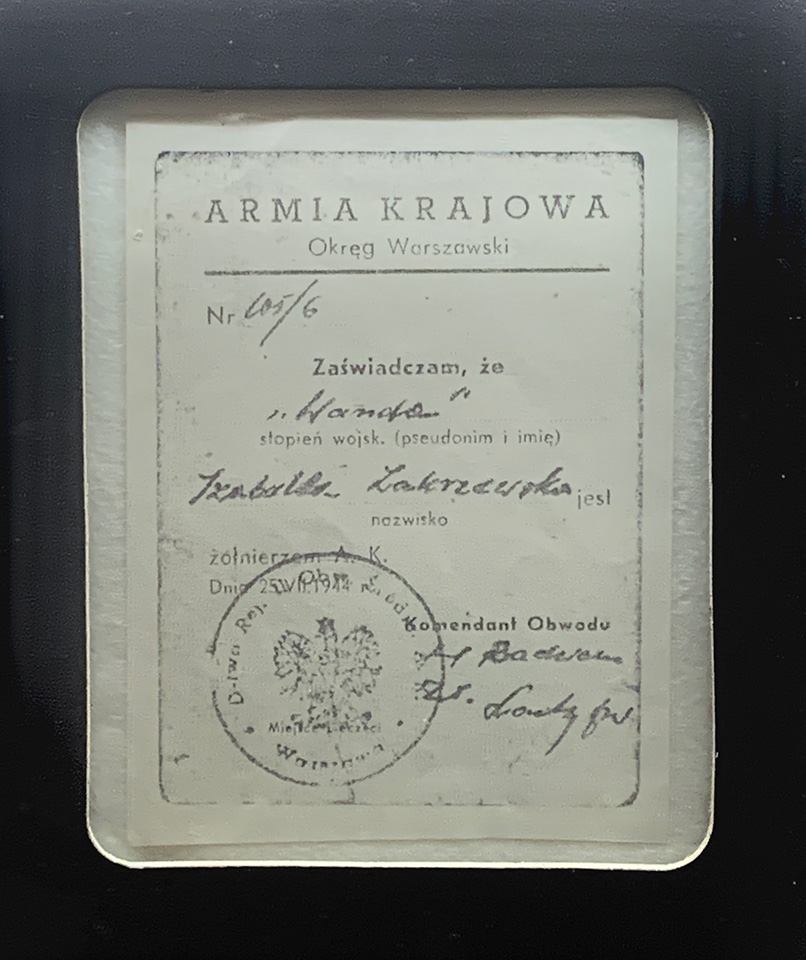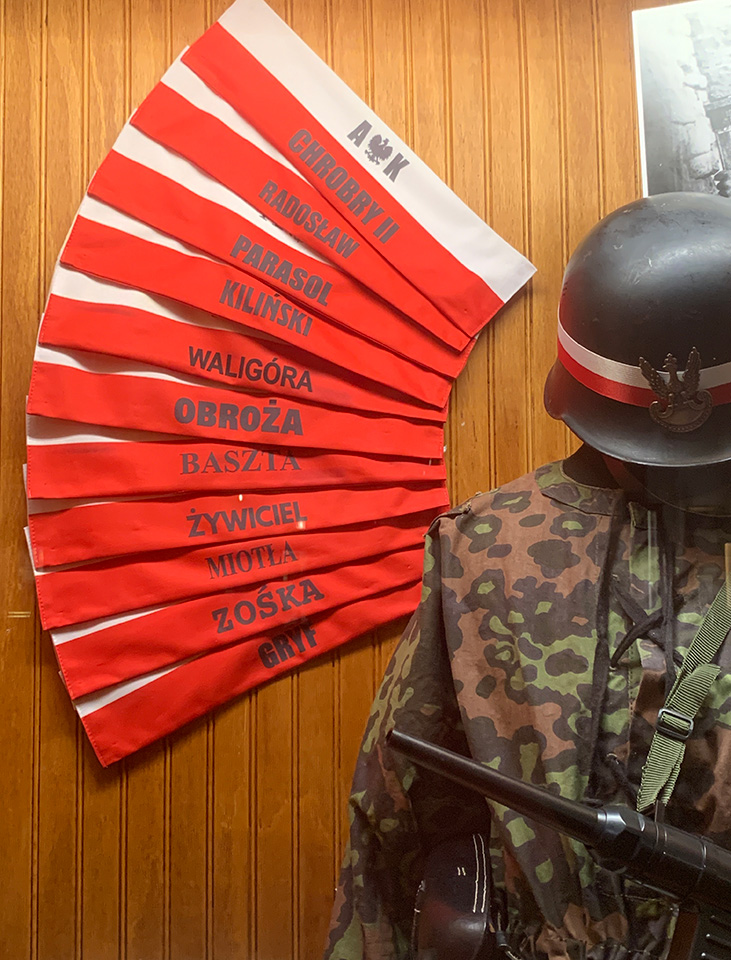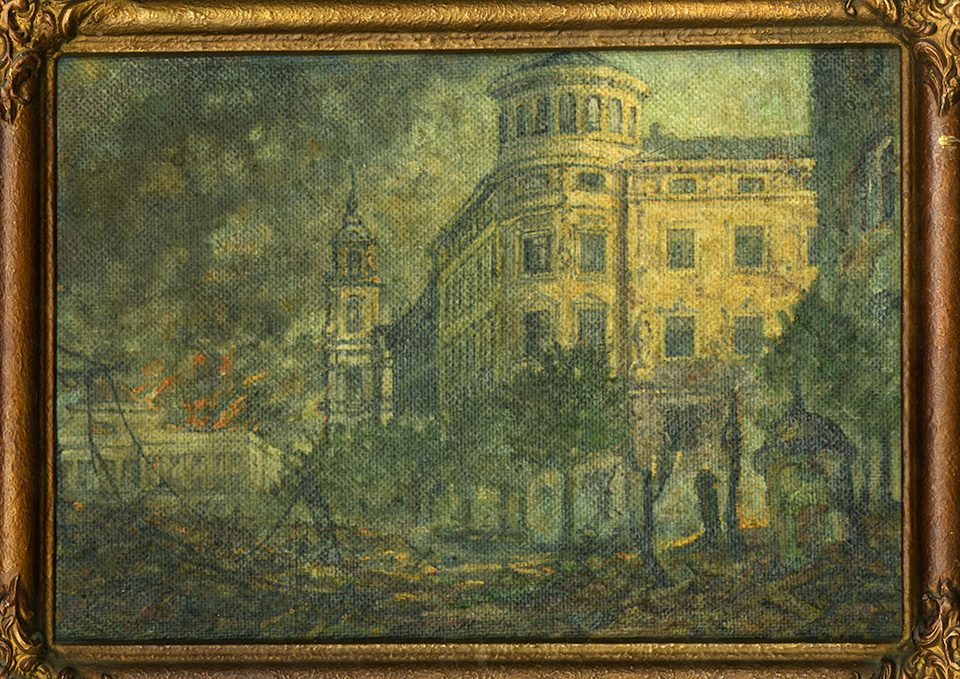During World War II, the Warsaw Uprising was a 63-day brave effort led by the Home Army to liberate Warsaw from German occupation and regain Polish independence. Despite overwhelming odds, they fought with determination and resourcefulness.
On August 1st, we take a moment to remember the historic breakout of the Warsaw Uprising, an extraordinary chapter in World War II history that unfolded from August 1, 1944, to October 2, 1944. During this 63-day period, the Polish underground resistance launched a brave and determined effort to liberate Warsaw from German occupation and reclaim Polish independence.
Led by General Antoni Chruściel "Monter," around 45,000 members of the Home Army (Armia Krajowa, AK) bravely took up arms to face the might of well-equipped German soldiers, complete with artillery, tanks, and air support. Despite being outgunned, these courageous partisans were not alone in their fight. An additional 2,500 soldiers from other resistance movements, such as the National Armed Forces (Narodowe Siły Zbrojne, NSZ), and the communist People's Army (Armia Ludowa, AL) lent their support to the cause.
However, the odds were stacked against them. Only a quarter of the resistance fighters had access to weaponry, but they refused to be deterred. The rest had to rely on resourcefulness, determination, and sheer willpower in their battle for freedom.
While the conflict was primarily a military one, it had a profound impact on civilians. Right from the beginning, the people of Warsaw were embroiled in the upheaval, caught in the crossfire of relentless airstrikes and fires that engulfed their homes. But amidst the chaos, the citizens displayed immense bravery and solidarity, working tirelessly to support the insurgents in any way they could.
Civilians were involved in diverse roles during the uprising, with women playing a particularly crucial part in the Polish resistance movement. They took on various responsibilities, from traditional roles like cleaning, cooking, and providing food to becoming couriers and liaison officers. Beyond their more traditional duties, Polish wives, mothers, and grandmothers formed the social infrastructure of the resistance, working as nurses and providing comfort to the soldiers in their darkest hours.
But the women's contributions did not end there – they were not just supporting from the sidelines. Female fighters, like those in the renowned "Dysk" unit (Dywersja i Sabotaż Kobiet – Women’s Diversion and Sabotage unit), fought on the frontlines alongside their male counterparts. The "Dysk" unit was part of the elite "Kedyw" battalions led by Jan Mazurkiewicz and had a significant impact during the early days of the uprising, securing key areas in northern Wola.
On August 2, 1944, the brave members of "Dysk" took a daring initiative, attacking the Waffen SS supply depots at Stawki, a place that held painful memories for the Jewish population. It was here that, a year and a half earlier, thousands of Jews from the Warsaw Ghetto had been held before being sent to the Treblinka extermination camp. In their heroic act, they managed to eliminate all German guards and successfully liberated several Jewish forced laborers.
Not only that, in the annals of the Warsaw Uprising, the Grey Ranks (Szare Szeregi) stand out as a symbol of youth and courage. Comprising young scouts, students, and teenagers, this clandestine organization was an integral part of the Polish Underground State, and their involvement in the uprising was a testament to the unwavering spirit of the youth. They participated in street battles, risking their lives alongside adult resistance fighters, proving that age was no barrier to defending their homeland.
Despite their unwavering efforts and sacrifices, the Warsaw Uprising faced insurmountable odds. By October 2, 1944, the Germans had managed to quell the resistance. In the aftermath, civilians were subjected to unimaginable horrors, with many deported to concentration and forced-labor camps. Tragically, the once-proud city of Warsaw lay in ruins.
As we commemorate the Warsaw Uprising, let us remember the tremendous courage and resilience of those who fought for their freedom and the independence of our nation. Their sacrifice and determination serve as a timeless reminder of the unbending spirit of the human will, even in the darkest of times. Today, we honor the memory of those who gave their all and draw inspiration from their heroism as we strive for a more peaceful and just world.
We also want to take this opportunity to invite you to a unique poetic and music program commemorating the anniversary of the Warsaw Uprising, titled “Days of Glory” that will take place on August 6th 2023 (Sunday) at 5:00 PM at Art Gallery Kafe (127 Front St, Wood Dale, IL). Tickets are $30. The starts include our own Barbara Kożuchowska, Monika Klaus, Adam Glinka, Bogdan Lanko and Andrzej Piekarski. We hope to see you there!
* * *
1 sierpnia obchodzimy rocznicę historycznego wybuchu Powstania Warszawskiego, niezwykłego rozdziału w historii II wojny światowej, który miał miejsce od 1 sierpnia 1944 do 2 października 1944 roku. W ciągu tych 63 dni polski podziemny ruch oporu podjął odważną i zdecydowaną akcję wyzwolenia Warszawy spod okupacji niemieckiej i odzyskania przez Polskę niepodległości.
Pod dowództwem generała Antoniego Chruściela „Montera” około 45 000 członków Armii Krajowej dzielnie chwyciło za broń, by stawić czoła potędze dobrze wyposażonych żołnierzy niemieckich, wraz z artylerią, czołgami i wsparciem lotniczym. Pomimo przewagi zbrojnej, ci odważni partyzanci nie byli sami w swojej walce. Dodatkowe 2500 żołnierzy z innych ruchów oporu, takich jak Narodowe Siły Zbrojne (NSZ) i komunistyczna Armia Ludowa (AL) poparło sprawę.
Jednak szanse były przeciwko nim. Tylko jedna czwarta bojowników ruchu oporu miała dostęp do broni, ale nie dali się odstraszyć. Reszta musiała polegać na zaradności, determinacji i czystej sile woli w walce o wolność.
Chociaż konflikt miał głównie charakter militarny, wywarł głęboki wpływ na ludność cywilną. Od samego początku mieszkańcy Warszawy byli uwikłani w przewrót, w krzyżowy ogień nieustannych nalotów i pożarów, które ogarnęły ich domy. Ale pośród chaosu obywatele wykazali się ogromną odwagą i solidarnością, niestrudzenie wspierając powstańców na wszelkie możliwe sposoby.
Cywile pełnili różne zadania podczas powstania, a kobiety odgrywały szczególnie ważną rolę w polskim ruchu oporu. Przyjęły na siebie różne obowiązki, od tradycyjnych, takich jak sprzątanie, gotowanie i dostarczanie żywności, po angażowanie się jako oficerki łącznikowe. Poza swoimi bardziej tradycyjnymi obowiązkami polskie żony, matki i babcie tworzyły infrastrukturę społeczną ruchu oporu, pracując jako pielęgniarki i zapewniając żołnierzom pocieszenie w najciemniejszych godzinach.
Ale wkład kobiet na tym się nie skończył – nie wspierały one tylko z boku. Bojówki, jak te z słynnego oddziału „Dysk” (Dywersja i Sabotaż Kobiet), walczyły na froncie u boku swoich kolegów. Oddział "Dysk" wchodził w skład elitarnych batalionów "Kedywu" pod dowództwem Jana Mazurkiewicza i miał znaczący wpływ w pierwszych dniach powstania, zabezpieczając kluczowe tereny północnej Woli.
2 sierpnia 1944 dzielni członkowie „Dysku” podjęli brawurową inicjatywę, atakując składy zaopatrzenia Waffen SS na Stawkach, miejscu, które dla ludności żydowskiej wiązało się z bolesnymi wspomnieniami. To tutaj półtora roku wcześniej przetrzymywano tysiące Żydów z warszawskiego getta przed wysłaniem ich do obozu zagłady w Treblince. W swoim bohaterskim akcie udało im się wyeliminować wszystkich niemieckich strażników i skutecznie wyzwolić kilku żydowskich robotników przymusowych.
Mało tego, w kronikach Powstania Warszawskiego Szare Szeregi wyróżniają się jako symbol młodości i odwagi. Ta tajna organizacja, złożona z młodych harcerzy, studentów i młodzieży, była integralną częścią Polskiego Państwa Podziemnego, a ich udział w powstaniu był świadectwem niezłomnego ducha młodzieży. Brali udział w walkach ulicznych, ryzykując życie u boku dorosłych bojowników ruchu oporu, udowadniając, że wiek nie stanowi przeszkody w obronie ojczyzny.
Pomimo ich niezłomnych wysiłków i poświęceń, Powstanie Warszawskie stanęło w obliczu nie do pokonania. Do 2 października 1944 r. Niemcom udało się stłumić opór. W następstwie tego ludność cywilną poddano niewyobrażalnym okropnościom, a wielu deportowano do obozów koncentracyjnych i obozów pracy przymusowej. Niestety, niegdyś dumne miasto Warszawy legło w gruzach.
Upamiętniając Powstanie Warszawskie, pamiętajmy o ogromnej odwadze i niezłomności tych, którzy walczyli o wolność i niepodległość naszego narodu. Ich poświęcenie i determinacja służą jako ponadczasowe przypomnienie o nieugiętym duchu ludzkiej woli, nawet w najciemniejszych czasach. Dziś czcimy pamięć tych, którzy dali z siebie wszystko i czerpiemy inspirację z ich bohaterstwa w dążeniu do bardziej pokojowego i sprawiedliwego świata.
Korzystając z okazji pragniemy również zaprosić Państwa na wyjątkowy program poetycko-muzyczny upamiętniający rocznicę Powstania Warszawskiego pt. „Dni chwały”, który odbędzie się 6 sierpnia 2023 (niedziela) o godzinie 17:00 w Galerii Sztuki Kafe (127 Front St, Wood Dale, IL). Cena biletu to $30. Gwiazdami tego wieczoru będzie nasza własna Barbara Kożuchowska, Monika Klaus, Adam Glinka, Bogdan Lanko i Andrzej Piekarski. Serdecznie zapraszamy!



